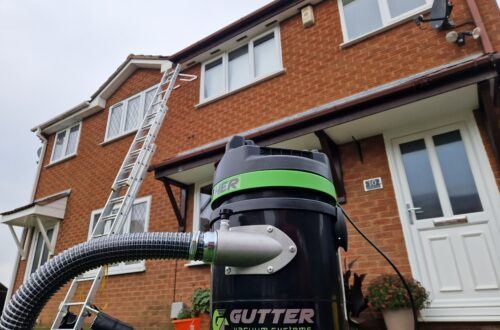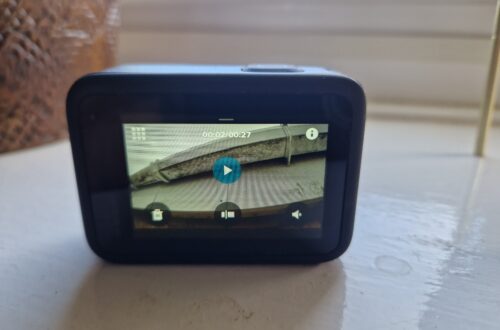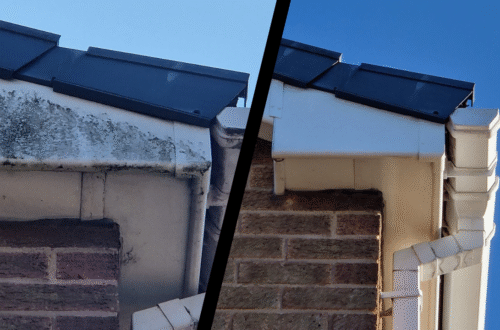How To Clean Windows Fast After Washing Gutters, Soffits, And Fascias
Intro
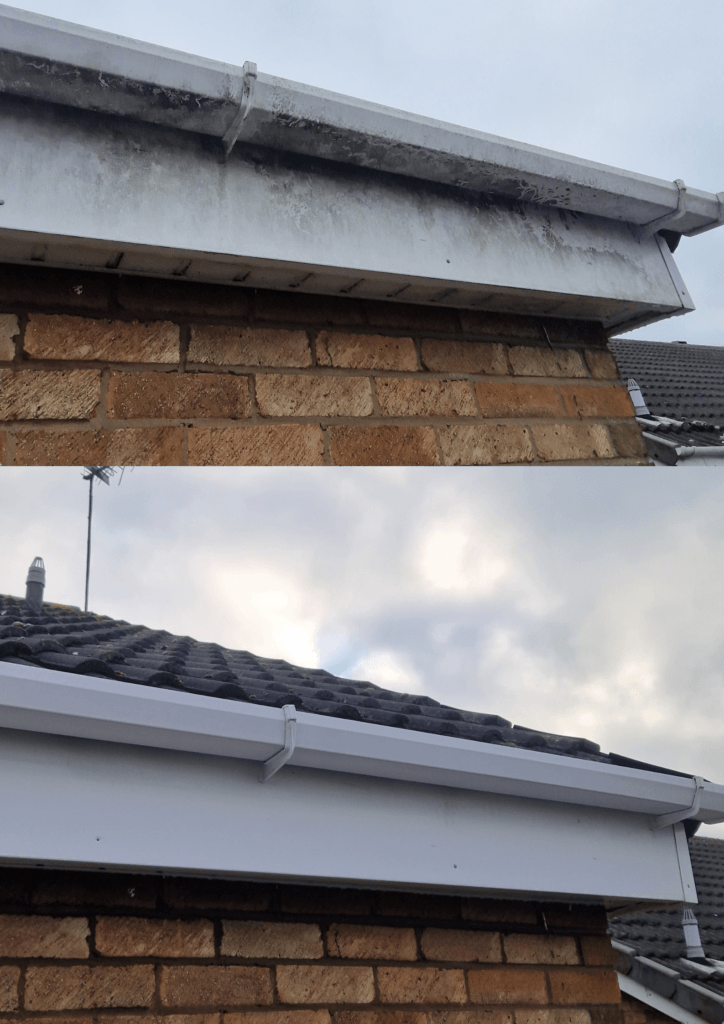
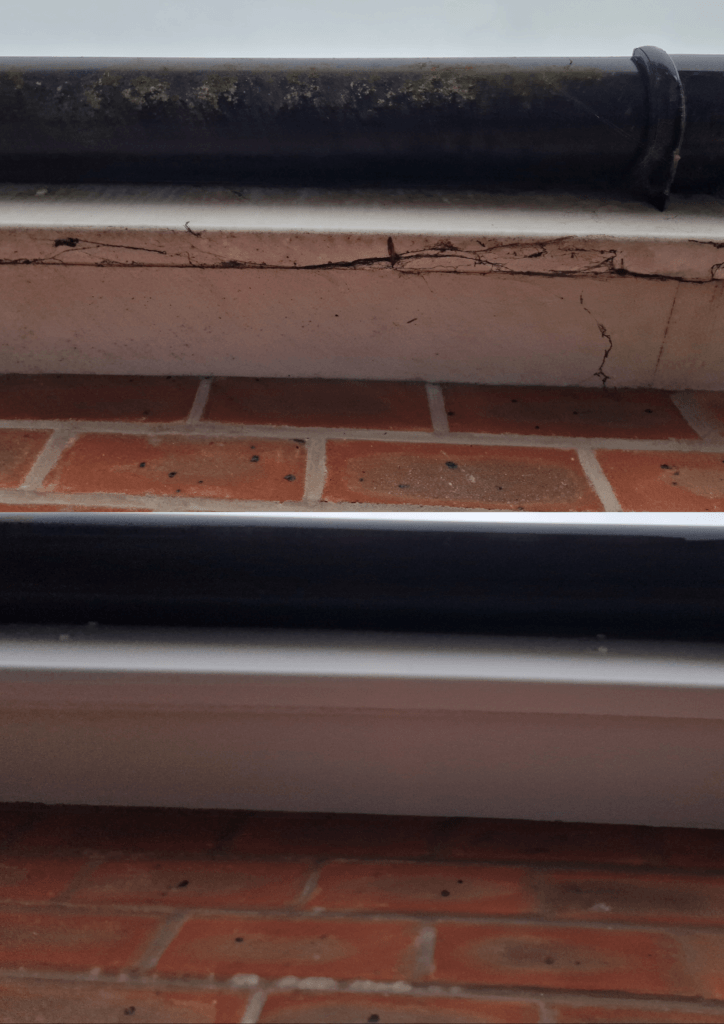
As part of your gutter cleaning services, you might also offer gutter, soffit and fascia cleaning. This is where you’d typically use a Water Fed Pole (WFP) system to clean the outer surfaces of the guttering and surrounding areas.
I’ve been offering this service for a while now, and it became clear from the very first couple of jobs that when you clean the outside of the gutters, you almost always end up splashing dirt and grime onto the windows below. If like me you were not really set up properly for window cleaning then this can be quite frustrating.
It feels like you clean one thing, only to make a mess of something else, in this case, the windows, which then also need cleaning before you can call the job finished.
So here, I’d like to give you a bit of insight into how I’ve made this process quicker and easier for myself over time.
Tools You’ll Need for a Fast Window Clean
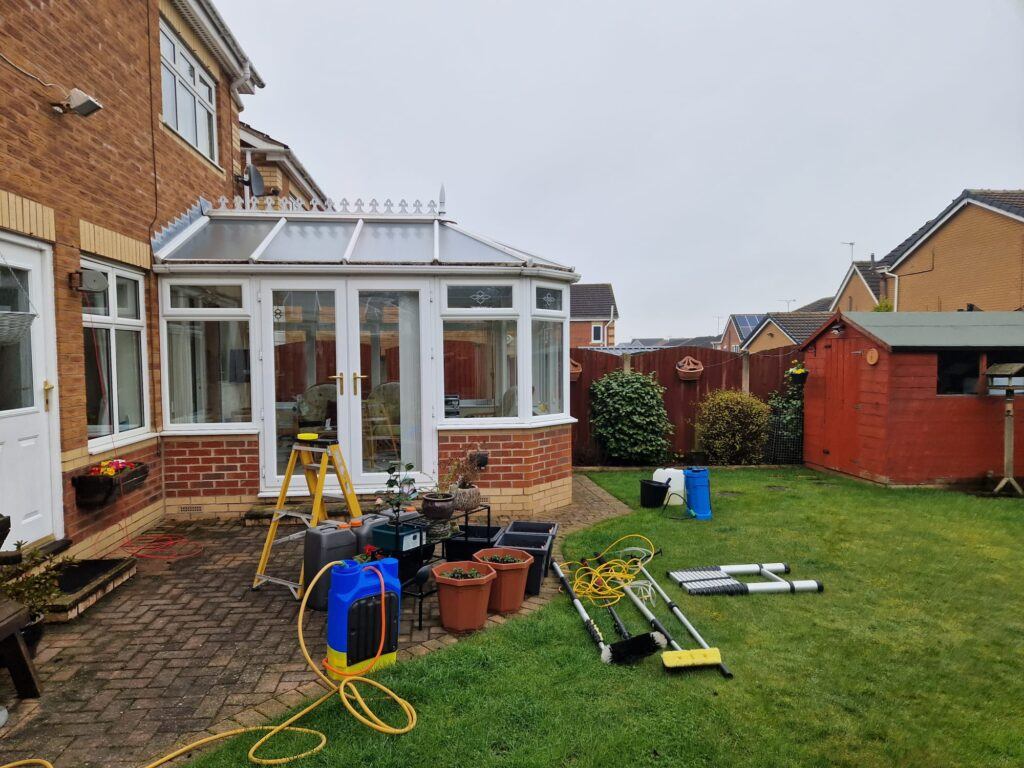
Starting Out
When I first started out, my window cleaning setup was pretty basic. I had a handheld squeegee, a sponge, a brush, and a bucket. This worked fine for ground floor windows, for when I was on-site pressure washing a driveway.
But once I started offering gutter, soffit and fascia cleaning, it quickly became clear that my setup wasn’t going to cut it for upper windows.
My First (Not So Great) Solution
At the time, I came up with a bit of a makeshift fix. I wrapped a towel around the brush on my Water Fed Pole (WFP) and used that to wipe down the upstairs windows after cleaning the gutters.
It worked… kind of. But there were quite a few problems:
- The towel got soaked from the wet brush
- It wasn’t practical or easy to use
- The towel would fall off mid-clean
- When soaked, the towel became really heavy on the end of the pole
- The whole process was slow and awkward
I did have a ladder on the van, but let’s be honest, the last thing you want to do after cleaning all the gutters, soffits and fascias is climb up and manually clean the windows.
In the next section, I’ll share how I improved this process and found a much better way to clean upper windows efficiently without the hassle.
An Inexpensive Secondary WFP Setup
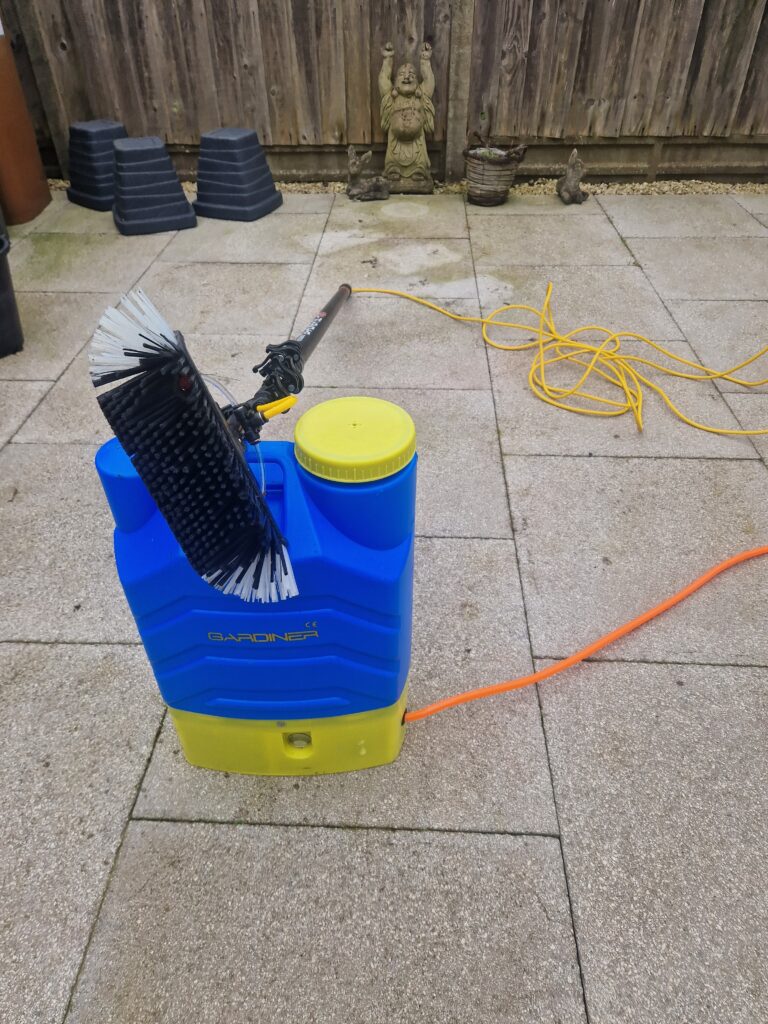
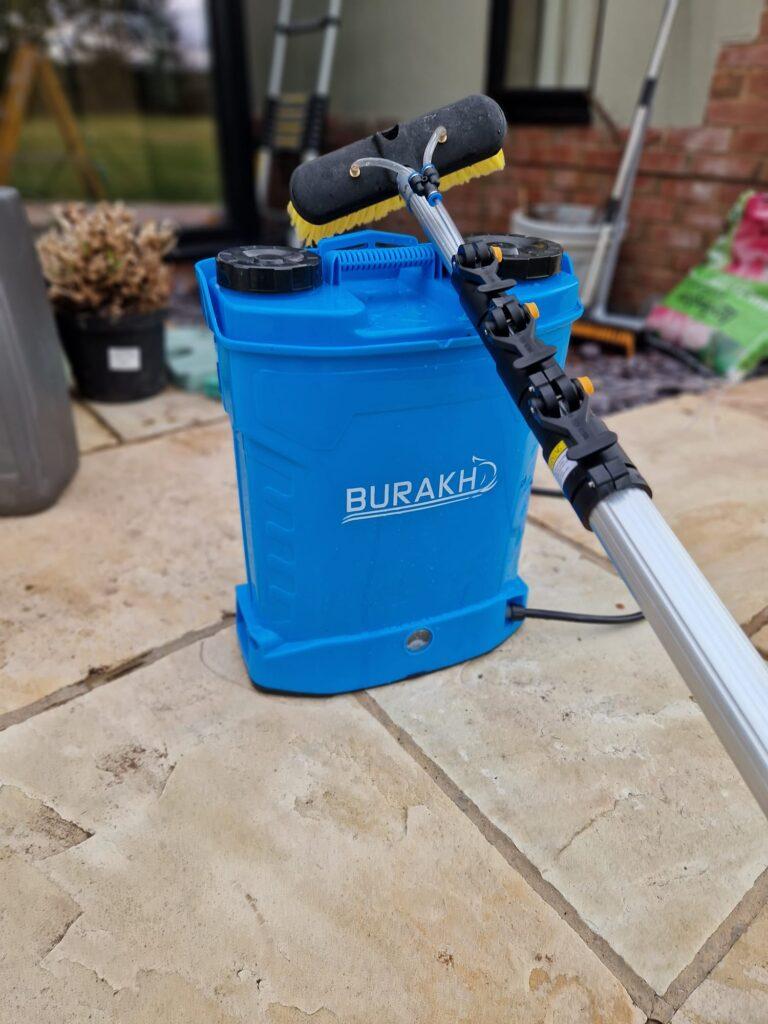
Before settling on a proper second Water Fed Pole (WFP) system, I tried a few budget options to sort out the windows after gutter cleaning. I used things like extendable poles with microfibre cloths on the end, but no matter what I tried, I kept ending up with streaky glass. It quickly became an inconvenience at the end of almost every job and felt like a burden once the gutters were clean.
What I Bought
Eventually, I decided to invest in a secondary WFP setup specifically for window cleaning, and it turned out to be one of the best purchases I’ve made for my business. The full setup cost just £145 from Amazon, which, if you know anything about WFP and backpack systems, is super cheap. More importantly, it saves me a ton of time and effort after every job.
Here’s the breakdown:
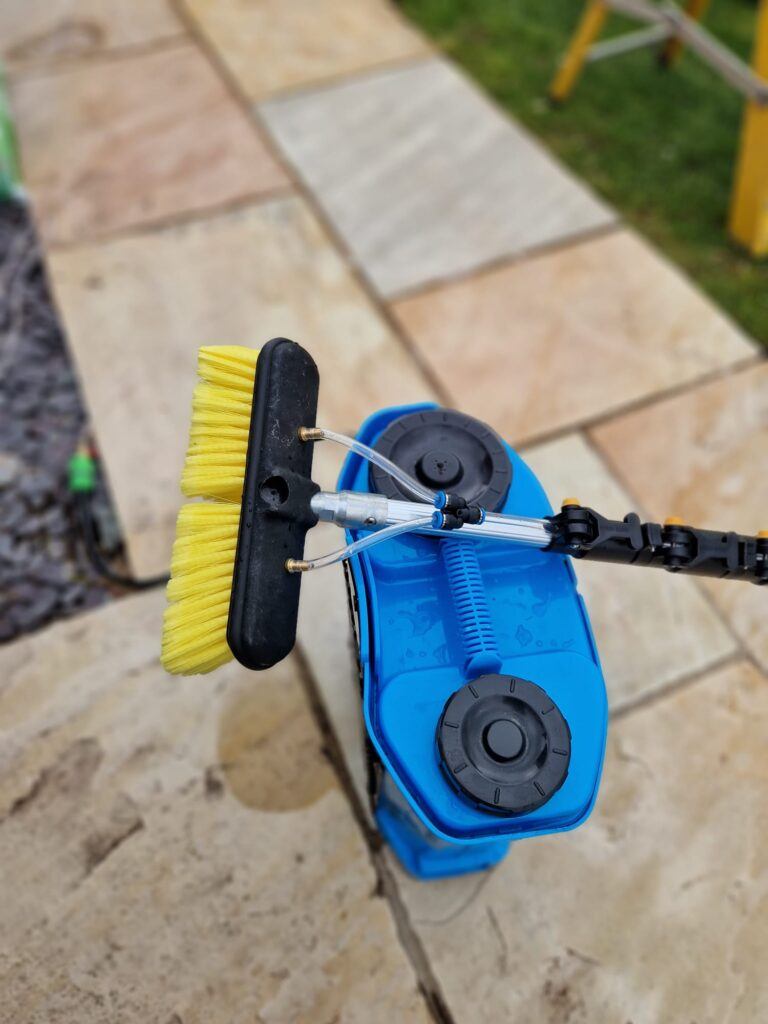
Water Fed Pole
£90.99
Perfect for upper windows and lightweight enough to use comfortably for quick cleans.
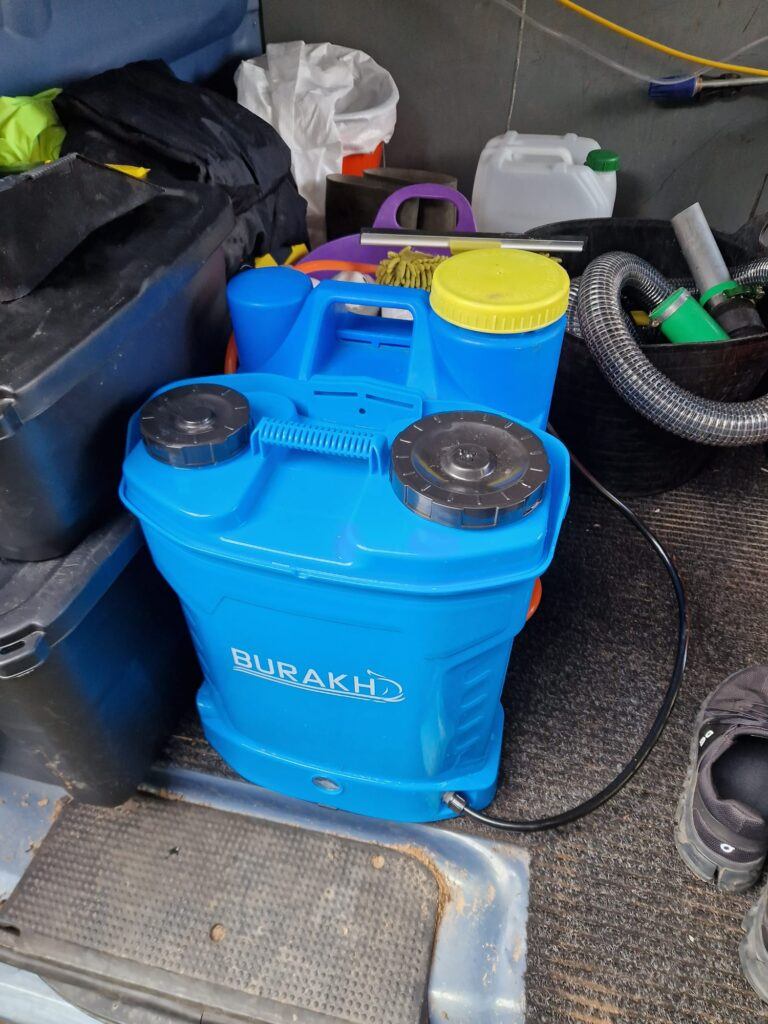
BURAKH Backpack
£54.99
Less than half the price of the Gardiner one I use, but still works brilliantly for this purpose.
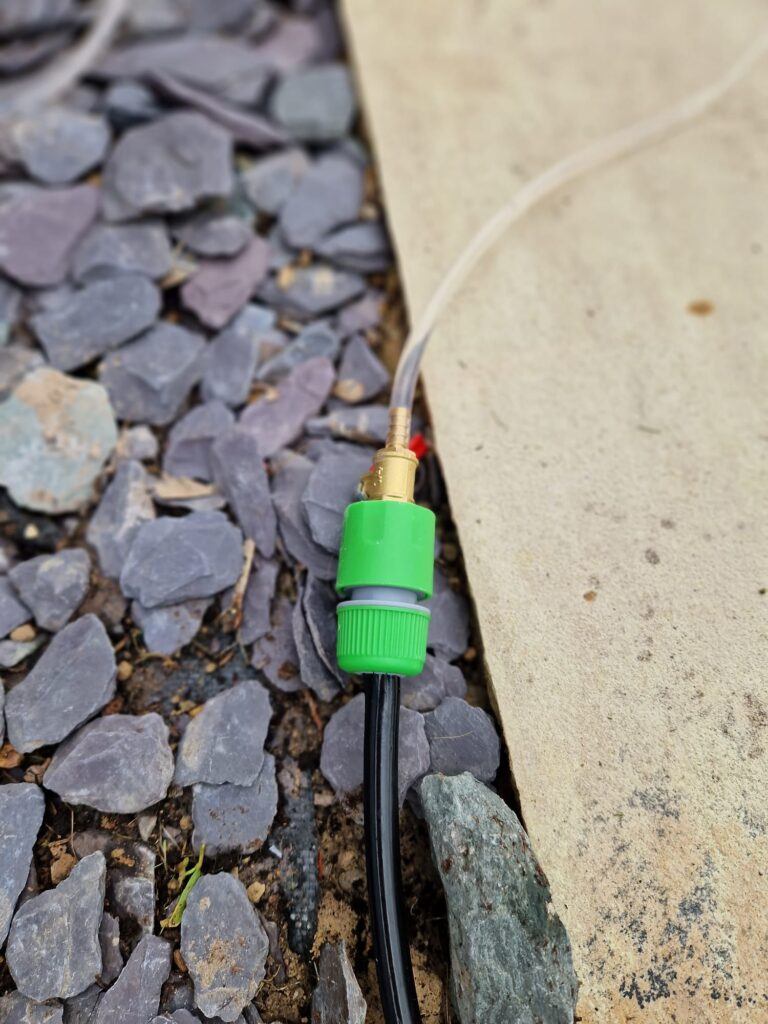
Setting It Up
To get it working, I simply removed the fitting from the end of the backpack hose and swapped it for a Hozelock connection. That’s all it took, and just like that, I had a fully functioning WFP system ready to clean windows properly, with no more makeshift towel fixes or streaky finishes.
This little setup has made window cleaning at the end of a job quicker, easier, and far more professional.
How to Clean Gutters, Soffits, and Fascias: A Beginner’s Guide to Water Fed Pole Systems
Do You Need Pure Water or Can You Use Tap Water?
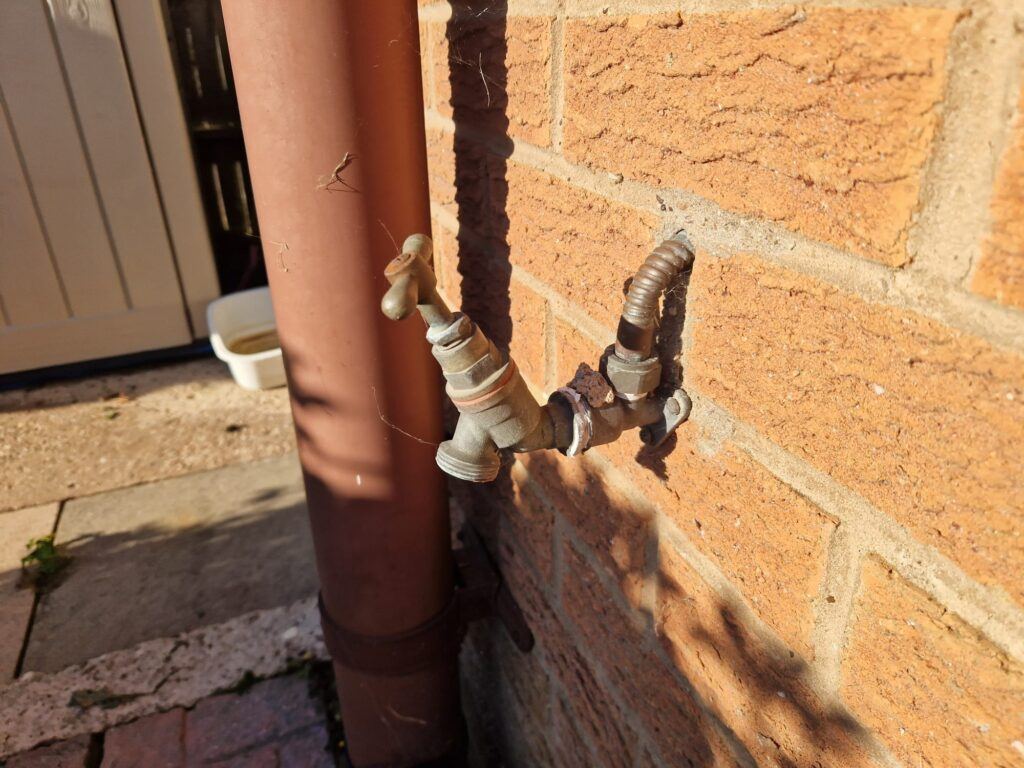
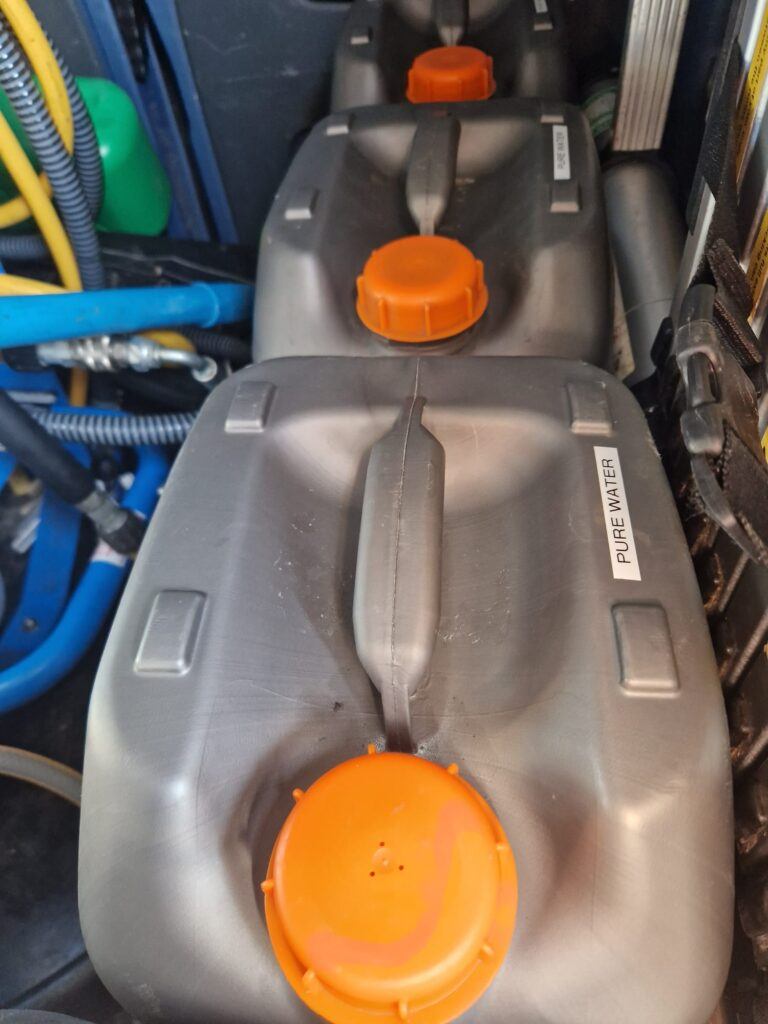
Up until recently, I had been using regular tap water through the same WFP setup I use for cleaning gutters. This is where I first started running into issues.
Because the brush had been used for cleaning dirty gutters, it was hard to get a proper finish on the windows. I could only clean certain areas properly, and the rest would end up streaky or still marked. This meant I had to rely on awkward, non-practical methods to try and tidy them up afterwards like I mentioned before.
I’m not saying it’s impossible to clean windows with normal tap water, but in my experience, it’s just too much hassle to get a good, consistent finish.
It also depends on the area you’re in, as the quality of tap water varies. Some places have softer or cleaner water, while others might be full of minerals that leave marks once the water dries.
Switching to pure water made a huge difference and took away the guesswork, giving a much more reliable and professional-looking result.
Using Pure Water for Better Window Cleaning Results
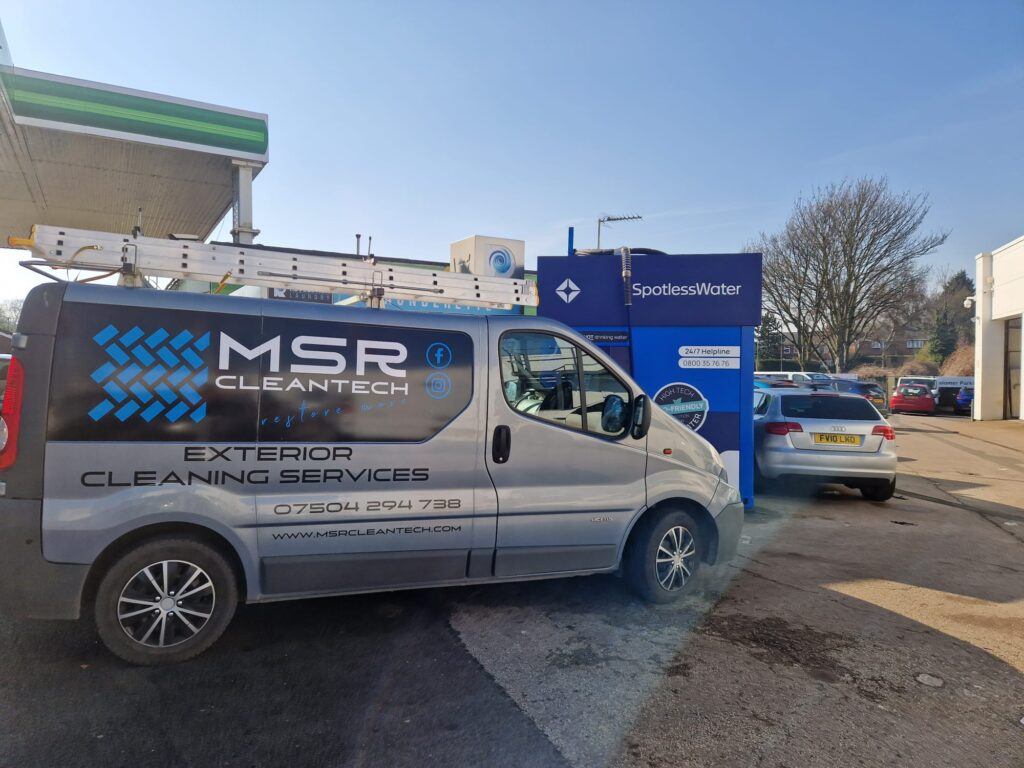
To get the best results from a Water Fed Pole (WFP) system when cleaning windows, it’s best to use pure water, just like professional window cleaners do.
I specifically bought my secondary WFP setup to be used with pure water only. I pre-fill it before each job so that as soon as I’ve finished with the gutters, I can quickly switch over to the pure water WFP and clean the windows in just a few minutes.
It’s a simple setup that saves time, gives a much better finish, and makes the whole process far more efficient.
At first, this might seem like another complication, but after thinking it over and giving it a go, I found it to be a very worthwhile addition to my setup.
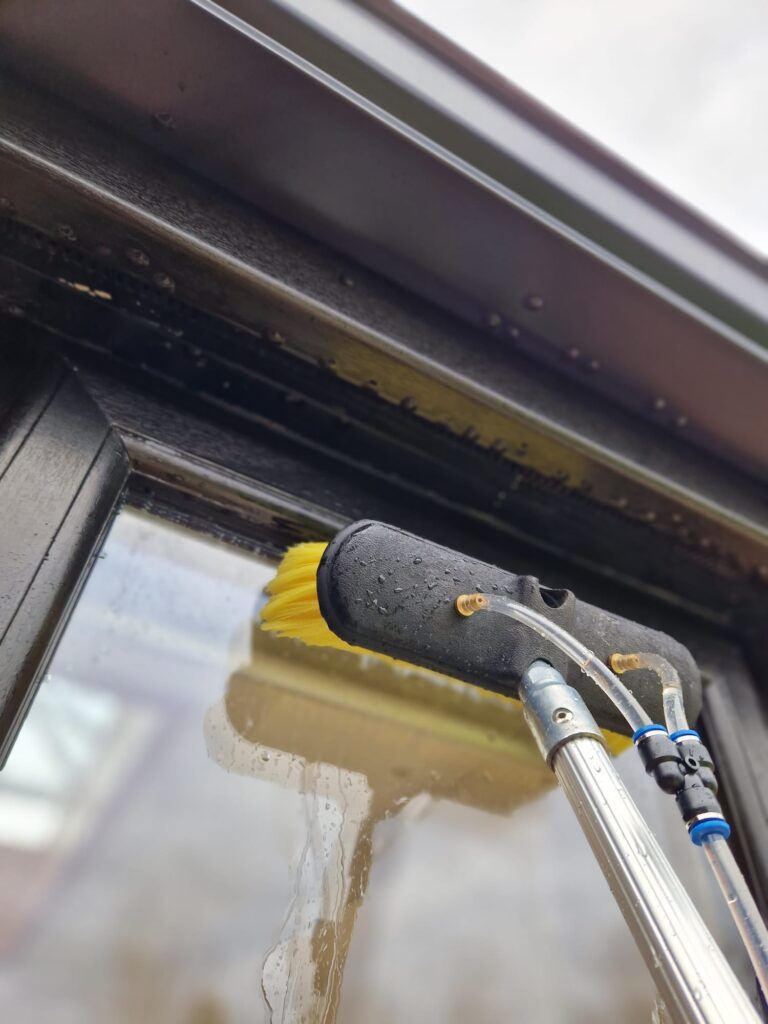
How Pure Water Works
Pure water has no additives, minerals, or impurities. It is completely neutral, which means that when used to rinse windows, it allows you to leave the glass wet, and as it dries, it leaves no streaks or marks (as long as the windows have been rinsed properly).
This eliminates the need for squeegees, ladders, or any of the unconventional and time-consuming methods I used to rely on when drying upper windows.
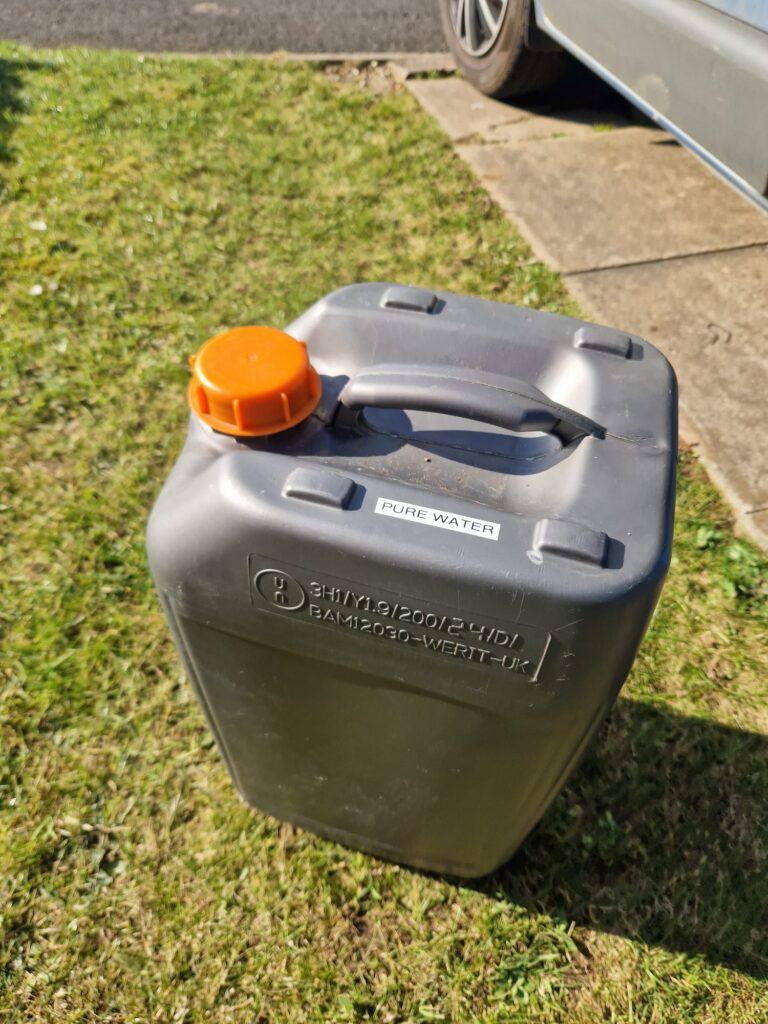
You Don’t Need a Big Tank
You also do not need a huge tank in the back of your van to carry pure water around. I started out by cleaning out some old 25-litre drums and filling them with pure water.
If you use it sparingly, one 25L drum can usually clean the windows of 2x standard two or three-bedroom houses. I tend to fill about five drums at a time and store them until needed. I will be storing more of these drums in the garage so I have a good supply ready for future jobs.
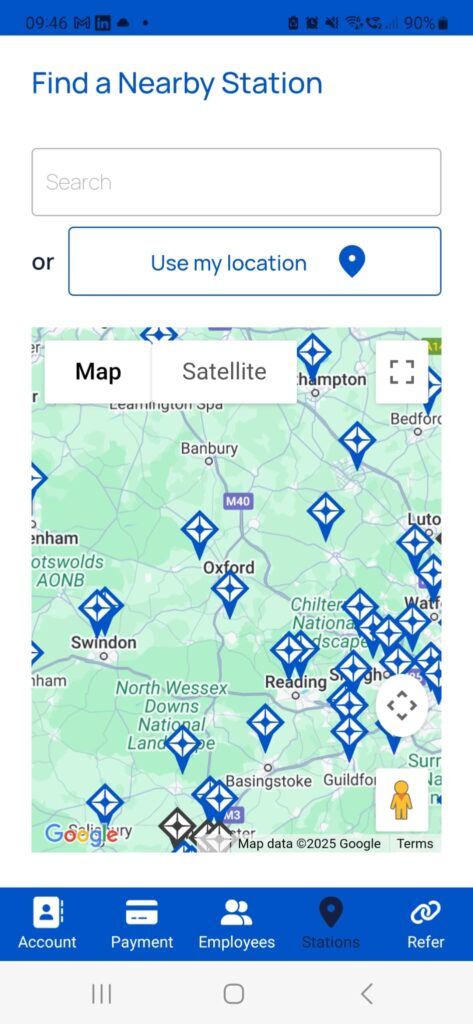
Where to Get Pure Water
If you want to try it yourself, visit Spotless Water and create a free account. You can then check if there’s a filling station near you.
As a guide, I paid around £9 for 125 litres, which works out really well for the number of jobs it can cover.
Using pure water has been one of the easiest ways I’ve found to get professional, streak-free window cleaning results without making life complicated.
Conclusion
If you want an easier, faster, and less stressful way of cleaning windows after finishing other exterior cleaning jobs, then in my opinion, spending around £150 on the right equipment is a no-brainer.
Since setting up my own dedicated system, I no longer dread cleaning windows at the end of a job. I know I can get a professional, streak-free finish in minutes without any messing about.
It has massively sped up my process and taken away the stress of dealing with streaks, ladders, or awkward last-minute touch-ups. Definitely one of the best investments I have made to date.
Exterior Cleaning, England, South Yorkshire UK



